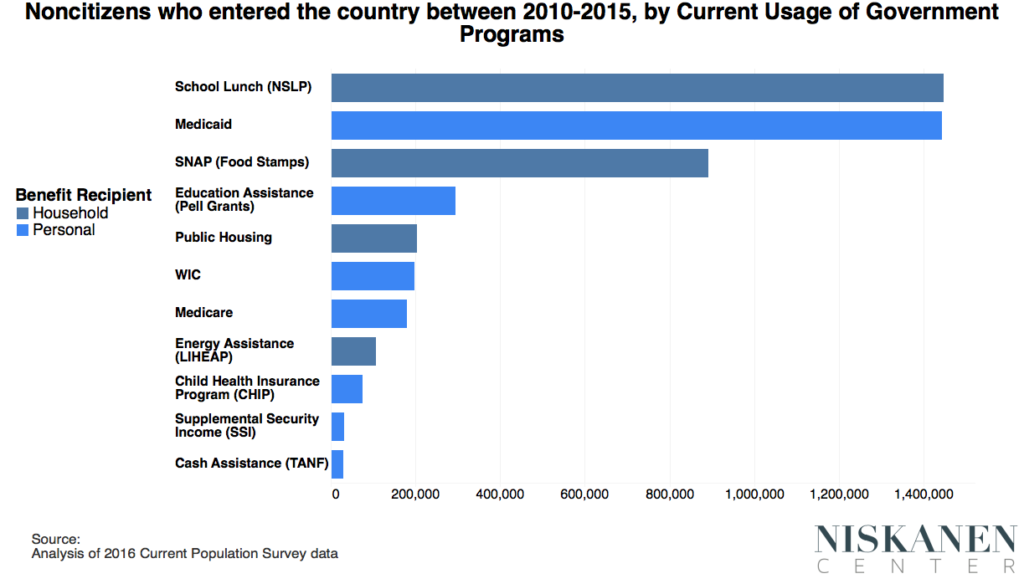In a new report my colleague Robert Orr and I gauge the threat to noncitizens from a draft executive order that would make it easier to deport or deny admission to immigrants for making use of federal means-tested programs. The order, reported on here by the Washington Post, makes reference to Section 212 of the Immigration and Nationality Act which defines general classes of alien ineligible for admission to the United States. It includes any alien who a consular officer may, at the time of the visa application or adjustment of status, suspect of becoming a “public charge.” This has historically been interpreted to mean individuals likely to become primarily dependent on cash assistance programs such as SSI, TANF or institutionalized for long-term care. Yet the definition of public charge is detailed in regulation, not statute, and as such the guidance about how to identify a public charge is not set in stone.
The draft executive order circulating in the media directs the Secretary of Homeland Security to rescind this and all past guidance “concerning the inadmissibility or deportability of aliens on the grounds that they are likely to be or have become public charges,” and begin taking steps to redefine public charge in a much broader way. Exactly what programs constitute “federal means-tested programs” is to be determined by a new DHS rule-making. However, it plainly directs the department “to include all Federal programs for which eligibility for benefits, or the amount of such benefits, are determined in any way on the basis of income, resources, or financial need.”
Taken literally, this would potentially jeopardize the admission of virtually all immigrants except those expected to live well above the poverty line, as many federal means-tested programs phase-out at 200% of the poverty line and beyond. Qualified aliens generally cannot receive means-tested benefits without having lived in the United States for a minimum of five years. However, major exceptions include noncitizens who qualified for a particular benefit prior to the enactment of the 1996 welfare reform, and the children of qualified aliens, although this once again varies widely by program and state.

Using the Census Population Survey, we estimate the number of noncitizens who arrived between 2010 and 2015 and who are using some kind of federal means-tested benefit. The CPS, like many household surveys, suffers from a response bias that tends to understate participation in public programs. Nonetheless, we find as many as 1.9 million otherwise lawful noncitizens could become deportable under a maximally inclusive definition of public charge. This includes more than 1.4 million and nearly 900,000 Medicaid and SNAP beneficiaries, respectively. These recipients are disproportionately women and households with children — the key groups partially exempt from the five year restriction on lawful alien benefit eligibility.
As we conclude,
The stated purpose of the executive order is to “protect the American taxpayers and promoting immigrant self-sufficiency.” However, its principal effect will be to maximize the executive branch’s discretionary power within existing statute to deport or deny admission to otherwise lawful noncitizens. Whether the administration will enact this executive order and use it to aggressively police the benefit use of lawful noncitizens remains to be seen. But without codifying the existing inter-agency guidance on determining who is public charge into law, there is little holding the administration back.
You can read the report in its entirety here. Update: Further detail on our methodology and figures broken down by state can be found in a new appendix here.